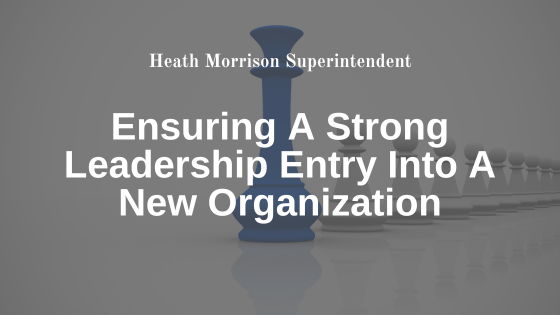Every leader stepping into a new organization should have a well-planned and articulated entry plan. Many leaders make the mistake of entering an organization with a pre-determined set of goals, ideas and changes they’d like to immediately begin the process of making. While it may be necessary to make an immediate mark, it’s also important that leaders take time to listen, learn and evaluate during their first 100 days:
- Listen – set aside time to meet with employee groups, customers, and stakeholders. Failing to authentically listen during the first 100 days may foster an idea that a new leader is uninterested and uninformed about the organization and its people. Stakeholders often see a change in leadership as a clean slate and will seize the opportunity to be very honest with a new leader. The listening step should be done in-person whenever possible.Get in front of as many people as you can and get to know them. Ask questions, share stories and read the room.
- Learn – While the new leader undoubtedly did their homework on their new organization, once in the role it is vital for the new leader to take time learn as much as possible about the company, inside and out. In addition to understanding the industry, competition, and external influences such as regulatory agencies, leaders should also learn about internal dynamics including company history and workplace culture. During this time of transition, remember that stakeholders are laser focused on a new leader’s communication, both verbal and non-verbal. Employees and customers will sense if you are asking questions but are not truly interested in their answers.
- SWOT – Next, conduct a SWOT Analysis with appropriate stakeholders. In addition to creating a list the company’s strengths, weaknesses, opportunities and threats, feedback could be gathered as responses to questions framed as “What happens if?” scenarios. The SWOT analysis step will be impactful on many levels, including a chance to work side-by-side and build relationships with employees from all levels of the organization. It allows employees to participate in creating a new path forward, providing them with a renewed sense of optimism, enthusiasm and ownership in the direction.
- Evaluate – Take a realistic look as you assess the company’s existing processes and procedures. Be as objective as possible in this phase and focus on what the organization needs from you. This phase will likely require some difficult conversations and can be particularly challenging for a new leader hired from inside the company; an outsider has the advantage of being a fresh set of eyes who can more easily challenge the “it’s just way we’ve always done it” status quo. New leaders should reflect often on the reason they were hired and recognize this evaluation step as an opportunity to set an entirely new course for the organization.
- Share – A willingness to be transparent about what you learned during your entry period is important, especially in situations where it’s not all good news. Feedback spotlighting areas to improve can turn into a valuable opportunity for growth. Sharing results from the SWOT analysis and employee surveys is key to producing and creating buy-in on actionable strategies for positive change. Timing is important in this step; adhering to a 100 Day entry avoids the trap of waiting for the “dust to settle”, missing out on the opportunity to set the right tone as a decisive, organized, action-oriented leader.
After this initial 100 Day phase, a new leader will probably be anxious to get to work and begin acting on what learned. It is important at this point to resist the urge to up-end everything. Since most leaders are hired to be change agents, it can seem counterintuitive to take a measured approach, but it is important to bring your stakeholders with you as you shape the new direction for the company. Recognize that some things can be done quickly, and others will take time. Your first 100 days will determine your short- and long-term success as leader of the organization.

